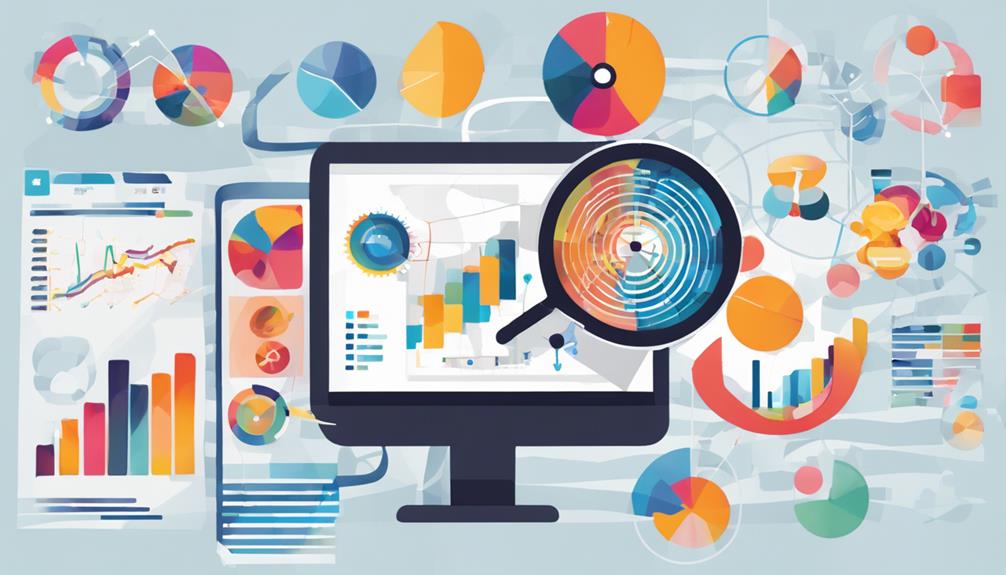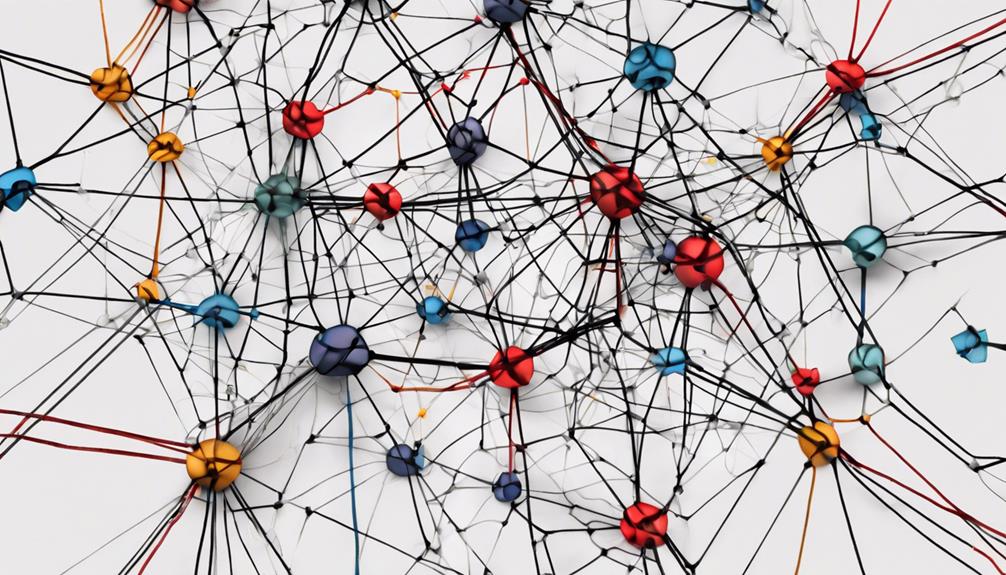Web data mining operates as a sophisticated detective, sorting through the labyrinth of online information to extract key insights, trends, and patterns. By employing intricate algorithms and innovative techniques, it uncovers valuable nuggets of knowledge hidden within the vast digital landscape. Imagine the intricate dance between data collection, analysis, interpretation, and visualization working in unison to unveil the secrets lurking beneath the surface of the web. Stay tuned to unravel the mysteries of this digital treasure hunt and gain a deeper understanding of how web data mining work.
Process
What is the process of web data mining? Web data mining involves extracting valuable information from a vast amount of data available on the internet. The process typically includes various techniques such as text mining and image recognition to uncover insights and patterns within the data.
Text mining plays a crucial role in web data mining by analyzing unstructured text data from websites, social media, and other online sources. It involves natural language processing, statistical analysis, and machine learning to discover trends, sentiments, and key information hidden within the text.
Image recognition is another essential component of web data mining, enabling the identification and analysis of images found on the web. This process uses advanced algorithms to classify, categorize, and extract meaningful data from images, providing valuable insights for businesses and researchers.
Algorithms
When delving into the realm of web data mining, one encounters a crucial element that drives the extraction of valuable insights: algorithms. Algorithm effectiveness is paramount in the process of web data mining. These mathematical formulas are designed to sift through vast amounts of data to identify patterns, trends, and relationships that might otherwise go unnoticed. The effectiveness of an algorithm can significantly impact the quality and efficiency of the insights derived from the data.
Algorithm optimization plays a vital role in enhancing the performance of web data mining processes. By refining algorithms through techniques such as parameter tuning, feature selection, and model evaluation, data miners can improve the accuracy and speed of their analyses. Optimization ensures that algorithms are tailored to the specific characteristics of the data being analyzed, leading to more precise results.
Data Collection
When it comes to data collection in web data mining, understanding the sources of data is crucial. You must be aware of where the information is coming from to ensure its relevance and reliability. Additionally, mastering various data extraction techniques is essential in efficiently gathering the needed insights from different web sources.
Sources of Data
When embarking on web data mining, one of the critical aspects to consider is the sources of data, specifically the methods and channels through which data is collected. Data can be sourced through web scraping or API integration. Web scraping involves extracting data directly from websites using automated tools that navigate through web pages, gather information, and store it for analysis. This method is useful when data from multiple websites needs to be aggregated for comprehensive insights. On the other hand, API integration allows data to be collected from various online platforms through their Application Programming Interfaces (APIs). APIs provide a structured and controlled way to access specific data elements or functionalities from web services. By integrating with APIs, data miners can retrieve real-time information while adhering to the guidelines set by the data source. Understanding and utilizing these diverse data sources are essential for successful web data mining endeavors.
Data Extraction Techniques
How can data extraction techniques enhance the efficiency and accuracy of web data mining processes? Data extraction techniques play a crucial role in optimizing web data mining by efficiently gathering relevant information. Web scraping is a fundamental method used to extract data from websites, enabling the collection of structured data for analysis. Text mining involves extracting valuable insights from unstructured text data, aiding in understanding trends and patterns. Image recognition techniques can analyze and extract information from images on the web, providing additional data sources for analysis. Sentiment analysis helps in extracting subjective information such as opinions or emotions from text, allowing for a deeper understanding of user preferences and behaviors. By utilizing these data extraction techniques, web data mining processes can be streamlined, leading to improved efficiency and accuracy in extracting valuable insights from vast amounts of data available on the web.
Data Analysis
Occasionally, data analysis is the cornerstone of web data mining, providing invaluable insights into patterns, trends, and relationships within the vast amounts of information gathered from various online sources. Data patterns are identified through statistical analysis, allowing you to uncover hidden correlations and extract meaningful information from the noise of raw data. Statistical analysis techniques help in quantifying the significance of patterns and trends, enabling you to make informed decisions based on data-driven insights.
Data Interpretation
Data interpretation plays a crucial role in extracting meaningful insights from the analyzed data in web data mining. By identifying and understanding data patterns, you can uncover valuable information that can guide decision-making processes. Interpretation techniques involve exploring relationships between data points, recognizing trends, and making predictions based on the patterns discovered.
When interpreting data in web data mining, it is essential to apply various techniques to derive accurate conclusions. These techniques may include statistical analysis, clustering algorithms, classification methods, and association rule mining. Each technique serves a specific purpose in uncovering insights from the data collected through web scraping and analysis.
Data Visualization
When it comes to data visualization, you can unlock valuable insights by visually representing data patterns. Various graphical representation methods such as charts, graphs, and heatmaps can help you identify trends, correlations, and outliers within your datasets. Utilizing these visualization tools effectively can enhance your understanding of complex data sets and aid in making informed decisions based on the patterns and relationships observed.
Visualizing Data Patterns
Visual patterns hold a crucial role in the realm of data visualization, serving as the cornerstone for uncovering insights and trends within complex datasets. Utilizing advanced data visualization techniques allows you to delve into the intricate relationships and structures present in your data. Trend analysis is a key component of visualizing data patterns, enabling you to identify recurring trends and anomalies that might not be immediately apparent in raw data. By visually representing these patterns, you can gain a deeper understanding of the underlying dynamics driving your data.
Visualizing data patterns involves transforming numerical information into visual forms such as charts, graphs, and heat maps. These visual representations help you spot correlations, outliers, and clusters that might be missed through traditional data analysis methods. Through interactive visualization tools, you can explore data from different perspectives, drill down into specific details, and extract valuable insights quickly and efficiently.
Graphical Representation Methods
Exploring graphical representation methods within data visualization opens up a realm of possibilities for extracting valuable insights and understanding complex datasets. Image recognition plays a vital role in this process, allowing algorithms to interpret and analyze visual data. By utilizing image recognition techniques, patterns within images can be detected, contributing to a more comprehensive dataset analysis.
Infographic design is another crucial aspect of graphical representation methods. Infographics are visual representations of information, data, or knowledge intended to present complex information quickly and clearly. Through effective infographic design, data mining results can be transformed into visually appealing and easy-to-understand graphics, aiding in the communication of insights and patterns to various stakeholders.
When incorporating image recognition and infographic design into data visualization, the potential for uncovering meaningful insights and trends within large datasets is significantly enhanced. These graphical representation methods not only facilitate data interpretation but also enable the effective communication of findings to drive informed decision-making.
Frequently Asked Questions
How Do Companies Ensure the Ethical Use of Web Data Mining Results?
To ensure the ethical use of web data mining results, companies must prioritize ethical considerations and data privacy. By implementing robust policies, conducting regular audits, and obtaining explicit user consent, organizations can maintain trust and integrity in their data mining practices.
Are There Legal Implications to Consider When Using Web Data Mining?
Mind data privacy and compliance regulations when web data mining. Legal implications loom large. Ensure thorough understanding of laws governing data usage. Stay vigilant to avoid penalties or lawsuits. Compliance is key.
What Are the Common Challenges Faced in Web Data Mining Projects?
When tackling web data mining projects, you may encounter challenges related to data accuracy and the complexities of implementing machine learning techniques effectively. Strive to address these obstacles to enhance the efficiency of your data mining endeavors.
How Can Web Data Mining Be Applied for Competitive Intelligence?
To harness the power of web data mining for competitive intelligence, delve into market analysis for trends, competitor strategies, and consumer sentiment. Track brand monitoring metrics to understand positioning and reputation. Uncover insights and gain a competitive edge.
What Measures Are Taken to Protect User Privacy During Web Data Mining?
To protect user privacy during web data mining, measures like data encryption and anonymization are used. Consent management and transparency in data collection practices ensure users understand and agree to how their information is being utilized.



